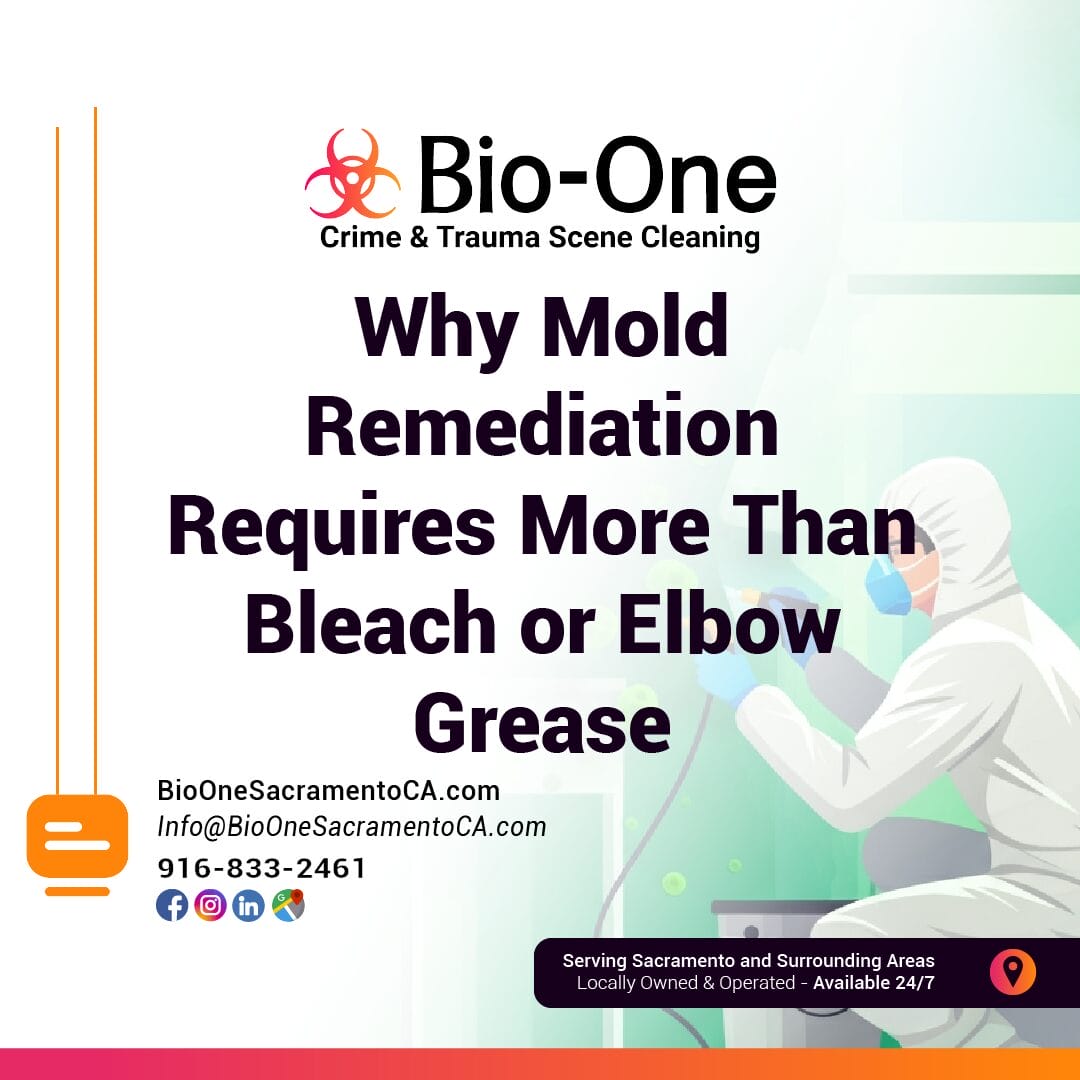
Finding mold in your home can be alarming. Your first instinct might be to grab a bottle of bleach and a scrub brush, ready to declare war on those unsightly spots. While that "can-do" attitude is admirable, when it comes to mold, a little elbow grease isn't just ineffective—it can make the problem much worse. True and lasting removal requires professional mold remediation.
Many homeowners believe that a spray bottle and some scrubbing can solve a mold issue. Unfortunately, this approach often only addresses the surface of the problem. It’s like trimming the leaves of a weed but leaving the roots intact. The mold will almost certainly return.
This post will explore why DIY methods fall short and why investing in professional mold remediation is the smartest, safest choice for your home and family.
The Problem with Bleach and DIY Methods
For decades, bleach has been the go-to cleaner for tough stains and germs. However, it's not the silver bullet for mold that many people think it is. In fact, using bleach can be counterproductive.
Bleach Only Kills Surface Mold
Mold is a fungus with a root-like structure called hyphae that grows deep into porous materials like drywall, wood, and grout. When you spray bleach on these surfaces, the chlorine component of the bleach often remains on the surface, killing the visible mold. However, the water component of the bleach soaks into the material, feeding the hidden mold roots.
The result? The surface looks clean for a short time, but the mold comes back, often stronger than before. The Environmental Protection Agency (EPA) actually advises against using bleach to kill mold on porous surfaces for this very reason. It provides a false sense of security while the underlying problem continues to grow.
You Might Spread the Spores
Scrubbing or disturbing a mold colony without proper containment measures can release millions of tiny spores into the air. These spores can travel through your HVAC system and settle in other areas of your home, creating new mold colonies. What started as a small patch in your bathroom could quickly become a widespread issue.
This is a significant risk that most DIY attempts don't account for. A lack of proper containment is one of the main reasons why a seemingly small mold problem can escalate after a DIY cleanup. This highlights the need for a professional mold remediation team that understands how to contain the work area effectively.
Health Risks of Improper Mold Removal
Beyond just spreading the mold, improper handling poses direct health risks. Mold exposure can cause a variety of health effects, depending on the type of mold and an individual's sensitivity. Common symptoms include:
- Sneezing and coughing
- Itchy, watery eyes
- Asthma attacks
- Skin irritation
- Headaches and fatigue
For individuals with compromised immune systems or chronic respiratory conditions, the effects can be even more severe. When you attempt to remove mold without the right personal protective equipment (PPE), you're breathing in a high concentration of spores and potentially toxic byproducts called mycotoxins. A team specializing in professional mold remediation is equipped with respirators, gloves, and full-body suits to handle these hazardous materials safely.
The Benefits of Professional Mold Remediation
Hiring a certified professional isn't just about convenience; it's about ensuring the job is done right, safely, and permanently. A professional mold remediation service offers a comprehensive solution that DIY methods simply can't match.
1. Proper Assessment and Identification
The first step a professional takes is to identify the source of the moisture that's allowing the mold to grow. Without fixing the underlying water problem—a leaky pipe, poor ventilation, or high humidity—the mold will always return. Professionals use tools like moisture meters to pinpoint the source of the issue.
They can also help determine the type of mold you're dealing with. While all mold should be removed, knowing the specific type can inform the remediation strategy.
2. Containment and Filtration
Professionals don't just start scrubbing. They create a sealed containment zone around the affected area using plastic sheeting and negative air pressure. This prevents spores from escaping and contaminating the rest of your home.
High-efficiency particulate air (HEPA) filters and air scrubbers are used during the process to capture airborne spores. This is a critical step that is often overlooked in DIY projects and is a cornerstone of effective professional mold remediation.
3. Professional Mold Remediation and Cleaning
Once the area is contained, the team will remove all mold-infested materials that cannot be salvaged, such as drywall or carpeting. For semi-porous or non-porous materials, they use specialized antimicrobial agents and techniques to clean and disinfect them. Unlike bleach, these agents are designed to penetrate materials and kill mold at its roots.
4. Preventing Future Growth
After the mold is gone, the job isn't finished. A reputable company will advise you on how to prevent mold from returning. This often involves addressing the original moisture source, improving ventilation, and controlling humidity levels in your home. They ensure that your home is not just clean, but also a less hospitable environment for future mold growth.
Your Home and Health Are Worth the Investment of Professional Mold Remediation
It's tempting to try to save money by tackling home repairs yourself. But when it comes to mold, the risks of a failed attempt are too high. A botched job can lead to a bigger, more expensive problem and potentially impact your family's health.
Investing in professional mold remediation provides peace of mind. You can be confident that the problem has been fully addressed, from the hidden roots to the airborne spores. If you suspect you have a mold issue, don't reach for the bleach. Instead, contact a team of certified experts who can handle the situation safely and effectively. For residents in the Sacramento area, the team at Bio-One of Sacramento is ready to help restore your home to a safe and healthy state.


